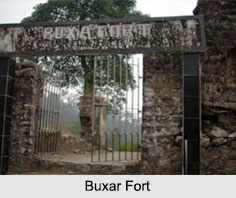 Located in the city of Buxar in the state of Bihar, the Buxar Fort is the headquarters of the Buxar District. The fort is situated on the banks of the Ganga River and is known to be a cultural heritage for its rich mythological history.
Located in the city of Buxar in the state of Bihar, the Buxar Fort is the headquarters of the Buxar District. The fort is situated on the banks of the Ganga River and is known to be a cultural heritage for its rich mythological history.
Etymology of Buxar Fort
The word Buxar is derived from VyaghraSar. The tiger face of Rishi Vedshira, an outcome of the curse of the sage Rishi Durvasha, was restored after bathing in a holy tank which was later named as VyaghraSar.
History of Buxar Fort
Established in the year 1054 by King Rudra Deo, the history of Buxar Fort dates back prior to the period of Ramayana. According to mythology, sage Vishwamitra, the family guru of Lord Rama, along with 80,000 other saints, had their sacred ashram at the banks of the holy river Ganges in modern day Buxar.
Once, during a yagna, the sages were disturbed by the demons and Lord Rama killed the demon Taraka, who was wrecking havoc on the ashram. Other than this, it was here in Buxar that Lord Rama and his younger brother Laxman took their teachings. It is also said that Ahilya, the wife of Gautam Rishi restored her human body from that of stone and got salvation by a mere touch of the feet of Lord Rama. This place is presently known as Ahirauli and is situated 16 km away from the Buxar town.
Archaeological Excavations in Buxar Fort
Archaeological excavations during 1926 to 1927 along the Ganga River bank unearthed two Brahmi inscribed seals that date back to the 3rd and 4th century. Other observations have revealed that the fort has bastions and had a subterranean passage which housed ancient images. This place is known as Patalganga. Famous archaeologists like Francis Buchanan and Alexander Cunningham visited the fort during the 18th century.
Visiting Information on Buxar Fort
The Buxar railway station is the nearest at a mere distance of 2 km from the fort and the Jay Prakash Narayan International Airport in Patna is the closest at a distance of 169 km from the Buxar Fort.



















